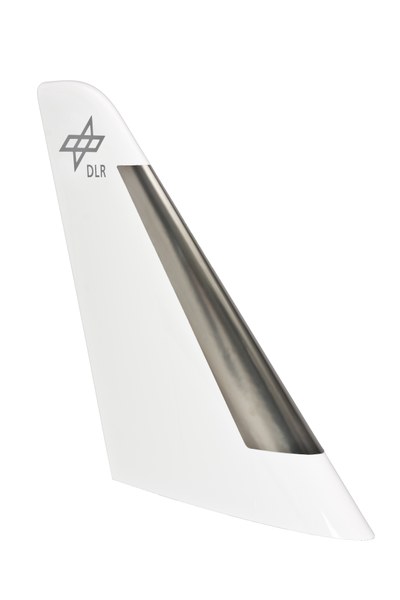LamAiR – vertical stabiliser with less drag
Duration: 2009-2012

As part of the DLR LamAiR (Laminar Aircraft Research) project, various DLR institutes are working together on the implementation of laminar flow technology on civil aircraft. Within the research group, the Institute of Structures and Design in Stuttgart is focusing on methods for hybrid laminar flow control (HLFC) with active suction of the boundary layer.
Today's commercial aircraft are largely affected by turbulence from the surrounding airflow, leading to increased drag compared to laminar flow and thus increased fuel consumption. However, if special measures such as active boundary layer suction succeed in making airflow around the lift and control surfaces occur in a laminar fashion, fuel consumption can be significantly reduced. This lower consumption results in a reduction in operating costs and enables compliance with increasingly stringent emission regulations.
The aim of the work at the Institute in Stuttgart is a new design for empennage leading edges using hybrid laminar flow control that takes into consideration all relevant design constraints, such as bird strike. An intelligent mixture of materials combined with new manufacturing technologies is being used for this. Each material is now used only where its properties can be optimally employed. Therefore, a metal outer skin is used as a durable outer layer and fibre-reinforced polymers are used for a light, yet stable and impact-tolerant, structure. For the special requirements of boundary layer suction, new manufacturing methods are being developed to best combine the various materials with one another. The project will conclude with the production of a full-size demonstration model.
As an example, the vertical stabiliser of the Airbus A320, a widely used medium-range passenger jet, was selected in Project LamAIR. The long-term goal upon successful completion of the project is to conduct flight tests using the A320 D-ATRA aircraft – of the DLR research fleet.
Work on Project LamAIR is associated with DLR’s plans to design HLFC structures for a new short- and medium-range aircraft. This overall aircraft design is based on a configuration that uses laminar-flow wings that are swept forward and a T-tail empennage.
The former Project LamAIR will continue under the name TuLam and the active suction technology is being further developed. The subject of flight hardware for a passenger aircraft is being expanded under the EU Clean Sky 2 and is being prepared for long-term testing.
